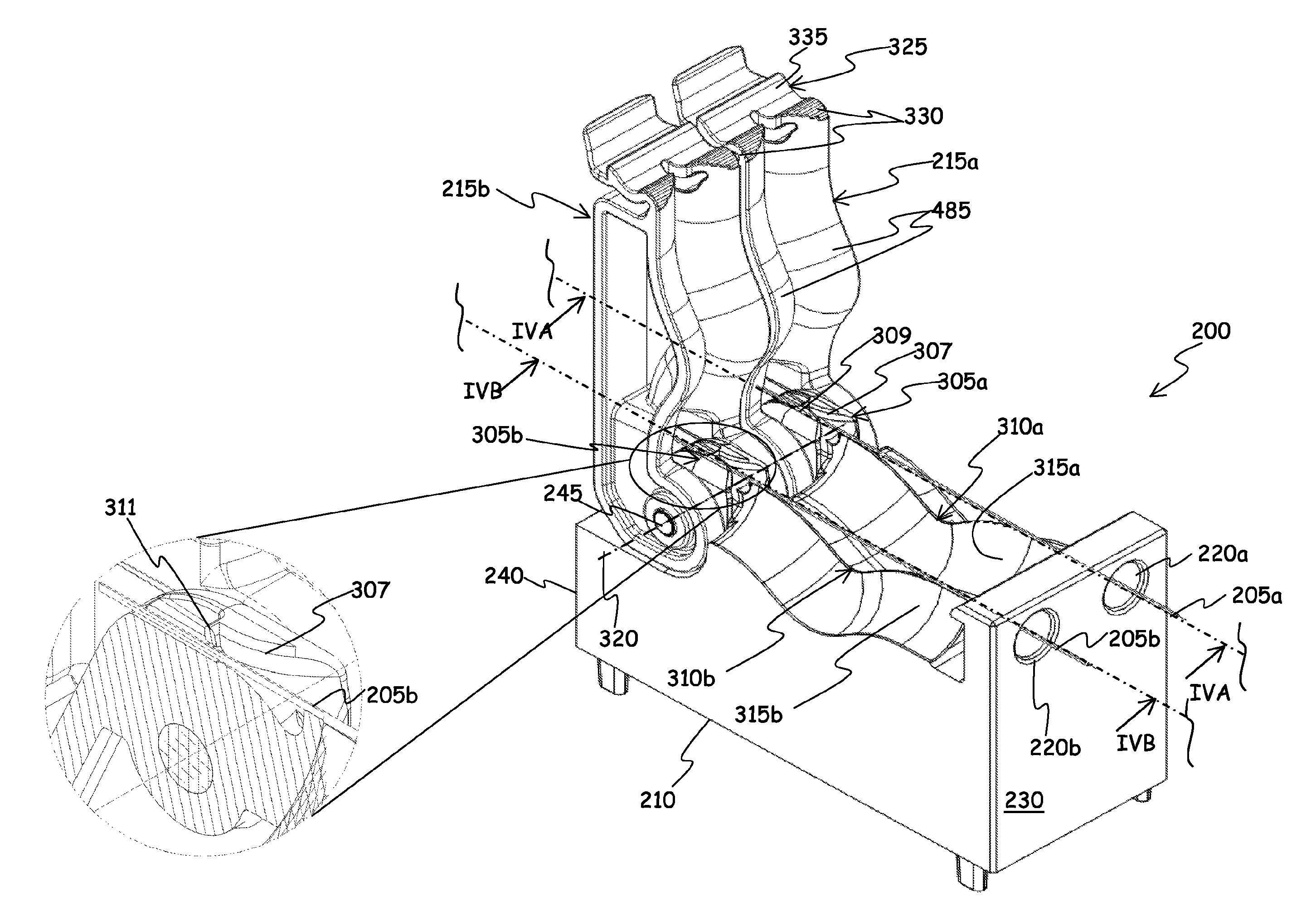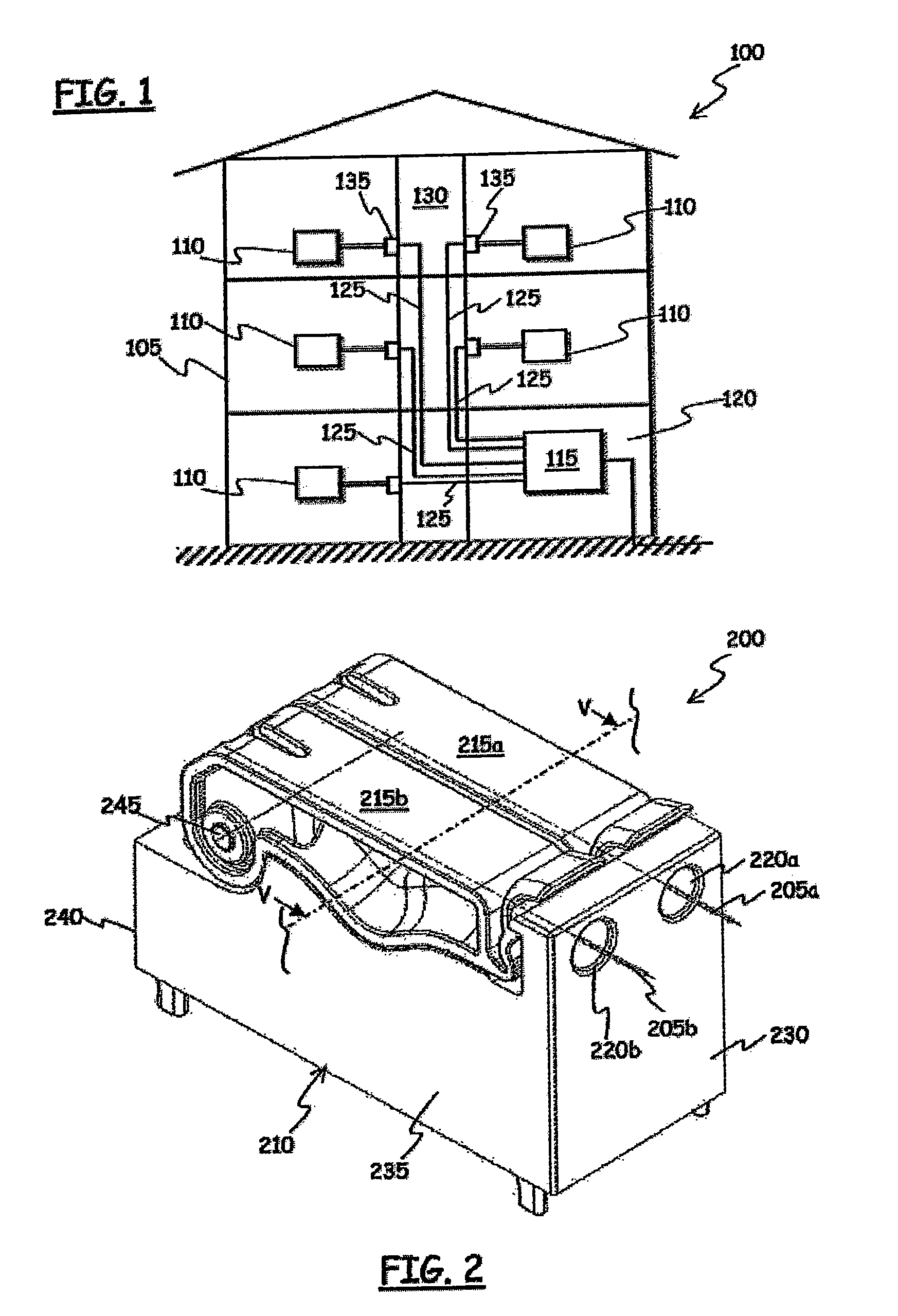Method and device for optical fiber connection
a technology of optical fiber and connection method, applied in the field of optical communication, can solve the problems of limiting factors, achieving high transmission rates, and relatively narrow bandwidth of electric cables
- Summary
- Abstract
- Description
- Claims
- Application Information
AI Technical Summary
Benefits of technology
Problems solved by technology
Method used
Image
Examples
Embodiment Construction
)
[0062]In FIG. 1 an exemplary scenario is depicted wherein a device according to an embodiment of the present invention is advantageously used. The considered scenario is that of a typical residential application, wherein a data communications network 100 brings network access to end users within a building 105. For example, the network 100 can be used to make available cable television (e.g., on-demand television), telephone, Internet and equivalent services at end users' electronic appliances 110 that can include for example television sets, personal computers, telephones or equivalent appliances.
[0063]A distribution unit 115 is arranged in a cellar or basement 120 of the building 105, and point-to-point optical cable links 125—with the respective optical cables housed in a suitable raceway 130 of the building—connect the distribution unit 115 to the user appliances 110 situated in the users' apartments at the various levels of the building.
[0064]For each of the point-to-point opt...
PUM
 Login to View More
Login to View More Abstract
Description
Claims
Application Information
 Login to View More
Login to View More - R&D
- Intellectual Property
- Life Sciences
- Materials
- Tech Scout
- Unparalleled Data Quality
- Higher Quality Content
- 60% Fewer Hallucinations
Browse by: Latest US Patents, China's latest patents, Technical Efficacy Thesaurus, Application Domain, Technology Topic, Popular Technical Reports.
© 2025 PatSnap. All rights reserved.Legal|Privacy policy|Modern Slavery Act Transparency Statement|Sitemap|About US| Contact US: help@patsnap.com



